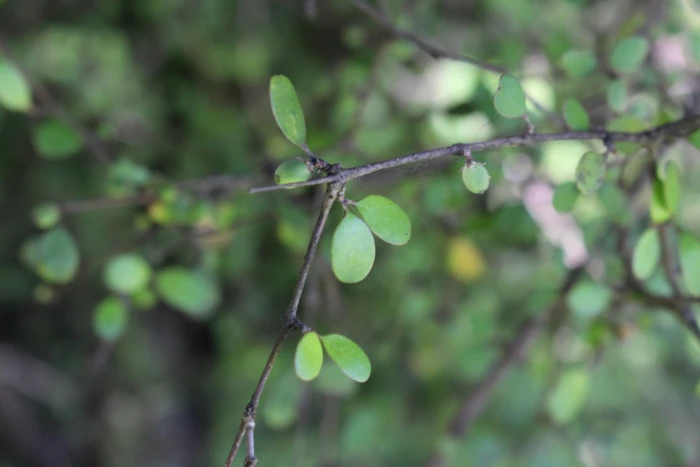Mikimiki
(Coprosma crassifolia)
Mikimiki (Coprosma crassifolia)
/
/

Joe Potter Butler
CC BY 4.0
Image By:
Joe Potter Butler
Recorded By:
Copyright:
CC BY 4.0
Copyright Notice:
Photo by: Joe Potter Butler | License Type: CC BY 4.0 | License URL: http://creativecommons.org/licenses/by/4.0/ | Rights Holder: Joe Potter Butler | Publisher: iNaturalist | Date Created: 2016-12-19T14:17:52-08:00 |

















































Estimated Native Range
Climate Requirements for East Orange, New Jersey
| This Plant | Your Site | Plant Suitability for Your Location | ||
|---|---|---|---|---|
| • Precipitation | 20" - 182" | 50" | Aquatic | Aquatic |
| • High Temp. | 60°F - 77°F | 86°F | Your summers may be too hot for this plant. | Too hot |
| • Low Temp. | 23°F - 50°F | 22°F | Your winter temperatures may be too cold for this plant | Too cold |
This plant should grow very well at your location but requires an aquatic environment.
Summary
Coprosma crassifolia, commonly known as Mikimiki, is an evergreen shrub native to the coastal forests, shrublands, and rocky areas of New Zealand. It typically grows to a height of 8-20 feet (2.4-6.1 meters) and a width of 2-3 feet (0.6-0.9 meters). Mikimiki has a dense, twiggy form and features small, leathery leaves that are dark green and glossy, contributing to its visual appeal throughout the year. The plant produces inconspicuous yellow-green flowers in spring, followed by orange-red drupes that are attractive to birds.
Mikimiki is valued for its hardiness and the textural contrast its glossy foliage provides in garden settings. It is used for hedging, screening, and as a specimen plant in coastal gardens due to its tolerance of wind and salt spray. In cultivation, Mikimiki thrives in full sun to part shade and requires well-drained soil. While it can handle high amounts of water, it is also drought-tolerant once established. Gardeners should be aware that Coprosma species can be prone to root rot if overwatered or planted in poorly drained soils.CC BY-SA 4.0
Mikimiki is valued for its hardiness and the textural contrast its glossy foliage provides in garden settings. It is used for hedging, screening, and as a specimen plant in coastal gardens due to its tolerance of wind and salt spray. In cultivation, Mikimiki thrives in full sun to part shade and requires well-drained soil. While it can handle high amounts of water, it is also drought-tolerant once established. Gardeners should be aware that Coprosma species can be prone to root rot if overwatered or planted in poorly drained soils.CC BY-SA 4.0
Plant Description
- Plant Type: Shrub
- Height: 8-20 feet
- Width: 2-6 feet
- Growth Rate: Moderate
- Flower Color: N/A
- Flowering Season: Summer
- Leaf Retention: Evergreen
Growth Requirements
- Sun: Full Sun, Part Shade
- Water: High
- Drainage: Fast
Common Uses
Bird Garden, Low Maintenance
Natural Habitat
Native to coastal forests, shrublands, and rocky areas of New Zealand
Other Names
Common Names:
Scientific Names: Coprosma crassifolia, Coprosma divaricata var. coriacea, Coprosma pendula
GBIF Accepted Name: Coprosma crassifolia Colenso